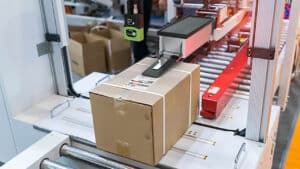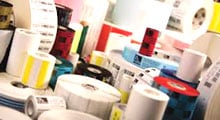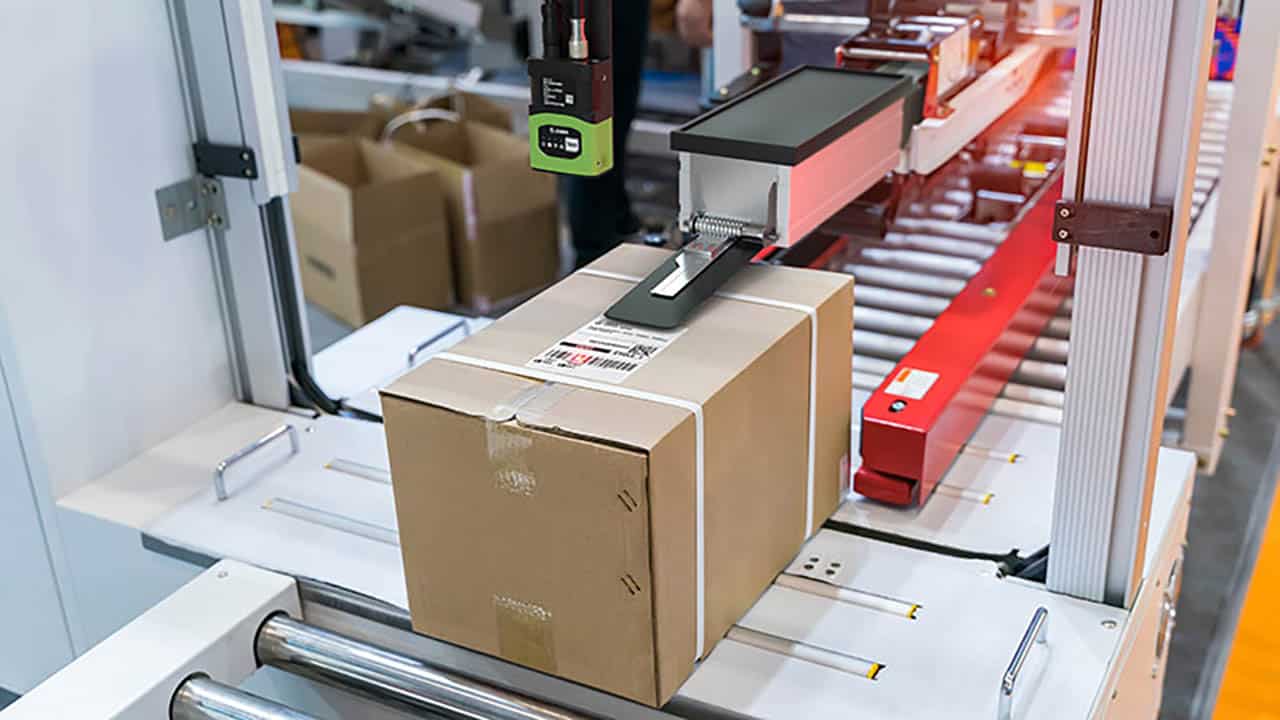Barcode label printing is part of a cost-effective barcode system that allows businesses to manage inventory, track assets, and maintain efficient supply chain operations. For small-to-midsize businesses looking to implement barcoding for the first time, or make existing barcode printing operations more efficient, choosing the right barcode printer for your application will prevent headaches, improve reliability, and avoid unnecessary spending.

Here is a quick checklist of things to look for and recommendations to ensure you get the most out of your labeling solutions:
- Extending Printhead Life With the Right Ribbon – The cost of a printhead is an often overlooked piece of the on-demand printing solution, usually running between $500 and $1000 dollars for each one. So would it surprise you if ribbons and labels you chose in order to save money end up costing you more because they might damage the printhead? Always use quality ribbons that have protective backcoatings which help to keep the printhead from getting scratched or abraded during printing.
- Optimizing Your Supply Chain – Where print volumes are high and variable due to seasonality, label supply and inventory becomes challenging. Carrying an overabundance of labels or ribbons in inventory is not desirable, but nor is having a shortage at a critical time and having to wait for shipping. It’s best practice to work with a provider offering multiple buying options like “Blanket Orders”, “Min-Max” or “Make and Hold”. Programs like these let the customer receive consumables when they need them and helps to avoid stock outs. In addition, top tier providers will have facilities or manufacturers in place in multiple regions to minimize the shipping time and cost to reach you when you are ready for replenishment, and will also offer “kitting” (putting labels and ribbons in the same box, using one part number to ensure proper pairing when re-ordering).
- Putting the Right Ribbon to the Right Paper – Trying to get the ink type correct means the surface characteristics of the face sheet must be considered. For applications using general-purpose paper label applications a wax ribbon is usually recommended. But if you require more durability or the substrate (the surface where the label is being applied) is a mid-range synthetic like polypropylene then a wax/resin ink is best. For a harsher environment like cold storage or outdoor application, using a polyester or similar label would require a full resin ink instead. However, each application has its unique aspects which may require a specific ribbon, so again it is recommended to consult with a qualified vendor and conduct sampling as well.
- Match the Label to Your Processes – It’s not just about the environment, but also how the label interacts as part of your process. And the specifics matter. For example, “scanning barcodes” seems basic, but “scanning barcodes from more than a few feet away” means you will need an entirely different label (in this case, a “retro-reflective” material which will enable scanning up to 20 feet away – ideal for use when working from aisle pickers and with high bays or taller racks).
- Include the Label Process in Your Floor Training – A common failure point of labels is when they are applied by hand on the floor, where incorrect application can be a leading cause of the label falling off the product or package. This is the worst case scenario for outbound product shipments, as it means both a lost product and potentially a lost customer as well. For example, labels should always be applied by pulling the liner away from the label, not the other way around. If the label is pulled away from the liner then it will impart curl and could lift during the application or be prone to lift later where it might get torn off on a conveyor or sorting machine.
- Labels not Scanning at Farther Distances – When we have to scan labels at distances greater than a couple of feet, there are materials called “retro-reflective”, which enable users to scan at distances up to 20 feet or more. These labels are often used in warehouse applications where labels are up high on racks.
Get The Experts To Take A Look
These are just a few of the many tips and best practices out there when it comes to perfecting your label solution. For optimal results, fewer errors and happier customers, consult with a qualified label expert to ensure you have the optimal label solution for your application.
Continue Reading
Deliver a Consistently Great Retail Experience
LEARN MORE TODAY 888-275-7325 Deliver a Consistently Great Retail Experience According to NRF, retail sales in the U.S. have increased to a whopping $5.23 trillion2,

How to Use Machine Vision in Warehouse Environments
The modern warehouse environment looks little like the warehouses of 10 years ago. In today’s warehouse, automated systems dominate, leveraging robotics and a wealth of
Around-the-clock Printing Performance
CONTACT US TODAY 888-275-7325 Around-the-clock Printing Performance Printer failure and errors are two of the leading causes of downtime in today’s DC businesses. In addition,

Peak UK Case Study: Howard Tenens Logistics
About Howard Tenens Established in 1953, today Howard Tenens has grown into one of the largest independently owned and operated logistics companies in the UK.

Making RFID Real for Your Business
Watch Now: Making RFID Real for Your Business Join industry leaders from Peak Technologies, Xemelgo, and Zebra Technologies as they explore cutting-edge RFID applications in
Honeywell Powerful Printers for High-demand Retail
LEARN MORE TODAY 888-275-7325 Powerful Printers for High-demand Retail With global retail sales expected to reach 32 trillion dollars by 2026, today’s retail market is




































